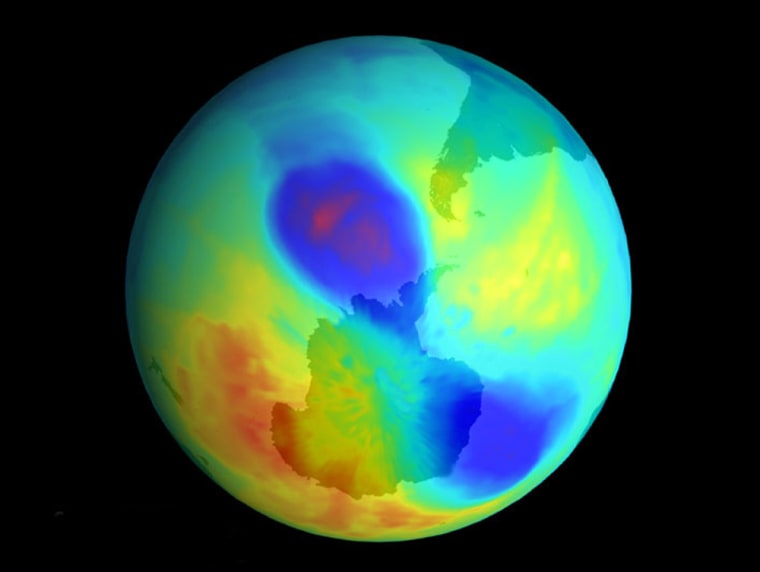The ozone hole over the Antarctic this year has reached the record size of 10.8 million square miles set three years ago, the United Nations’ weather organization said Wednesday.
Measurements over and near Antarctica show that ozone decreased more rapidly this year than in previous years and that the size of the ozone hole is now as large as it was in September 2000, the World Meteorological Organization said.
The hole could continue to grow to its largest size ever in the next couple of weeks, the WMO said, but it also could suddenly decrease.
“It’s impossible to predict,” said Michael Proffitt, a leading expert on the ozone hole at WMO. “Judging from previous years, it usually continues to increase for one or two weeks at this point.
“But I don’t think it would increase by that much,” he added. “It would be very surprising if it increased by 20-30 percent.”
Hole appears annually
The hole, a thinner-than-normal area in the protective layer of gas high up in the earth’s atmosphere, has started forming at the end of Antarctic winter every year since the mid-1980s. In August, when the sun starts to rise again over Antarctica, it triggers accelerated ozone loss following extremely cold South Pole winters when the area remains in darkness.
One cause of ozone depletion is the chlorine and bromine released by human-made chemical compounds such as chlorofluorocarbons, which were contained in some aerosols and refrigerants.
Reduction of the ozone layer can let harmful ultraviolet rays from the sun reach the earth’s surface. Too much UV radiation can cause skin cancer and destroy tiny plants at the beginning of the food chain.
In recent years, the ozone hole has tended to near its largest size during mid-September, with the maximum sometimes reached in late September. Later, it mostly gets filled back in with ozone from the rest of the layer.
This year’s phenomenon is in stark contrast to the ozone hole last year, when it was the smallest in more than a decade after splitting in two during late September.
Earlier, longer, deeper
“The general trend seems to be that the ozone hole is starting earlier, lasting longer and is deeper,” said Proffitt, adding that last year’s smaller and shorter-lasting phenomenon was likely an oddity.
Emission of chlorofluorocarbons have been curbed under a global accord. As a result, measurements show they are now decreasing in the lower atmosphere and have just peaked and stabilized in the critically important ozone layer in the stratosphere.
Scientists predict it will take about 50 years for the ozone hole to close.
“This is the worrying part,” Proffitt said. “People will stop observing the emissions standards. Things will go back to the way they were before we started reducing chemical emissions.”
The ozone hole forms in the polar vortex, the circular wind pattern that forms annually in the stratosphere over Antarctica, and this year the vortex is on the scale of 2000, with an area of 13 million square miles.
